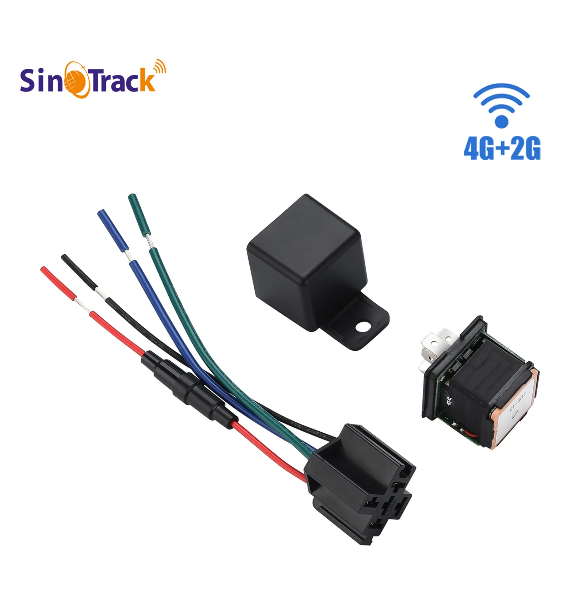Understanding Wireless GPS Tracker Installation Basics
Types of Wireless GPS Trackers
Wireless GPS trackers come in various types, each tailored to specific needs. The main categories include vehicle trackers, personal trackers, and asset trackers. Vehicle GPS trackers are primarily used for fleet management and vehicle security, providing real-time location tracking that aids in recovering stolen vehicles. On the other hand, personal GPS trackers focus on safety and monitoring loved ones, especially in tracking children or elderly family members. Asset trackers are designed to secure valuable items, such as cargo or equipment, against theft.
These diverse uses are reflected in their popularity. For instance, recent statistics suggest that vehicle GPS trackers are the most preferred, with around 60% of users opting for them due to their versatility and reliability in fleet management and personal vehicle tracking. Understanding the different types ensures you select the appropriate tracker for your specific needs.
Essential Tools and Safety Precautions
Installing a wireless GPS tracker requires a set of essential tools and adherence to safety precautions. Typically, you'll need basic tools like screwdrivers for mounting, wire strippers for exposing wires, and zip ties for securing parts. These tools are crucial for ensuring the tracker is properly installed and stays in place. Before starting, it's important to consider safety by disconnecting the vehicle battery to prevent electrical shocks during installation.
Industry experts stress the importance of avoiding common installation mistakes, such as incorrect wiring connections or placing the tracker in poorly signal-receiving locations. Following safety guidelines not only protects you from accidents but also ensures the effectiveness of your GPS tracking system. Streaming expert advice during the installation process can help avoid these pitfalls, ensuring a smooth and precise setup.
Step-by-Step Installation Guide for Different Tracker Types
Installing an OBD-II Plug-In Tracker
Installing an OBD-II plug-in tracker in a vehicle is a straightforward process that involves finding the OBD-II port under the dashboard, usually beneath the steering wheel. Once located, aligning the tracker with the port and plugging it securely ensures a stable connection. It's important to secure the tracker to prevent movement during driving, which can be accomplished using zip ties or adhesive straps. After installation, ensuring data connectivity is crucial; this involves checking for a stable signal with the provider app or website, and verifying that the device is transmitting data correctly.
Setting Up Battery-Powered Wireless Trackers
When setting up battery-powered wireless trackers, selecting a suitable area in the vehicle is key to optimal functionality. Common installation spots include under seats or inside the glove compartment, where they remain concealed yet maintain a clear GPS signal. Activation typically involves downloading a mobile app or visiting a website and linking the device to an account. It's also vital to consider battery life and use tips to maximize efficiency, such as regularly checking the battery status and optimizing the tracker settings for best performance.
Attaching Magnetic GPS Trackers Securely
To attach magnetic GPS trackers securely, selecting appropriate metal surfaces within the vehicle is essential. The front bumper and undercarriage are popular choices, providing both concealment and ease of signal access. Ensuring the tracker is firmly attached is necessary to avoid loss or damage while driving; this can be accomplished by verifying the industrial strength of the magnets. Regular monitoring and maintenance, such as checking the placement and condition of the tracker, ensure it remains effective and secure throughout its use.
Optimal Placement Strategies for Concealment and Performance
Top Concealed Locations for Vehicle Tracking
Finding the perfect concealed spot for a GPS tracker in your vehicle can significantly boost the effectiveness of tracking and security. Some of the best locations include under the dashboard, inside wheel wells, or even within the bumper. These areas not only offer a high level of discretion but also maintain the integrity of the GPS signal necessary for accurate tracking. It's crucial to keep trackers hidden from potential tampering or theft. A case study highlighted an instance where a hidden GPS tracker allowed law enforcement to recover a stolen vehicle, demonstrating the value of effective concealment. When selecting a spot, ensure it's not only hidden but also accessible for maintenance if needed.
Balancing Signal Strength and Discreet Placement
Finding the balance between maintaining strong GPS signal strength and discreet placement is vital for effective tracking. Materials like metal can obstruct the signal, so placing trackers behind plastic or fiberglass parts could be advantageous. To ensure reliability in tracking, it's recommended to perform signal testing after installation. This crucial step can help verify that the tracker can consistently communicate with GPS satellites, regardless of its concealed location. Strategies such as placing trackers where they have a partial line of sight to the sky, such as through vehicle windows, can optimize performance while keeping the device discreet. A successful installation is one where the tracker remains unseen but performs reliably and without hitches.
Configuring, Testing, and Maintaining Your Tracker
Connecting to Mobile Apps and Software
Securing an efficient setup for your GPS tracker starts with the right mobile app. Begin by downloading the application recommended for your specific GPS tracker model from popular platforms like the Apple App Store or Google Play Store. Once installed, follow the guided steps to connect your tracker with the app. Choosing a user-friendly app with robust features is crucial; it simplifies the process of monitoring your vehicle and enhances your user experience. Apps such as CarLock are praised in user reviews for ease of use and comprehensive tracking features. This ensures you can effectively harness the full potential of your GPS tracker.
Verifying GPS Functionality and Accuracy
Once your GPS tracker is app-connected, it's essential to verify its accuracy and proper functioning. Testing methods like live tracking and distance checks can ensure your device is working as expected. Look for accurate real-time locations, smooth updates, and alerts that correlate with your vehicle's movement. A properly functioning GPS tracker should consistently provide such information. However, should you encounter discrepancies, troubleshooting steps typically involve checking connectivity, ensuring the device is properly powered, and reviewing app settings to address any common issues, ensuring reliable tracking operations.
Routine Maintenance for Long-Term Reliability
Routine maintenance is key to ensure the long-term reliability of your GPS tracker. Regular maintenance tasks include checking the battery condition if applicable, updating firmware to the latest versions, and ensuring that all connections are secure. It's crucial to recognize when a tracker needs servicing or replacement, typically indicated by erratic data or frequent connectivity loss. Experts often advise users to maintain a schedule for these checks to prolong the lifespan of GPS trackers. Incorporating these measures will not only improve performance but also ensure that the device remains operational and accurate over time.
FAQ
What types of GPS trackers are available?
The main types of wireless GPS trackers include vehicle trackers, personal trackers, and asset trackers. Each type is designed for different purposes, such as vehicle security, personal safety, or securing valuable items.
What tools are needed to install a wireless GPS tracker?
Essential tools include screwdrivers for mounting, wire strippers for exposing wires, and zip ties for securing parts. Safety measures like disconnecting the vehicle battery are also important to prevent electrical shocks.
How can I ensure my GPS tracker is securely attached?
For secure attachment, especially for magnetic GPS trackers, select appropriate metal surfaces in the vehicle like the front bumper or undercarriage. Verifying the magnet's industrial strength can prevent loss or damage.
Where can I conceal a GPS tracker in my vehicle?
Ideal concealed spots include under the dashboard, inside wheel wells, and within the bumper. These locations maintain signal integrity and protect against tampering or theft.
How do I verify GPS tracker functionality?
Testing the tracker using live tracking and distance checks ensures proper functionality. Accurate real-time locations and smooth updates should reflect your vehicle's movement.

